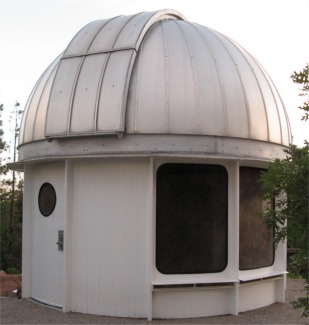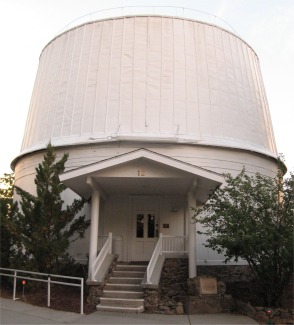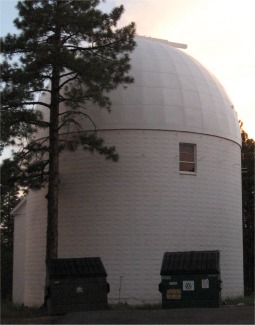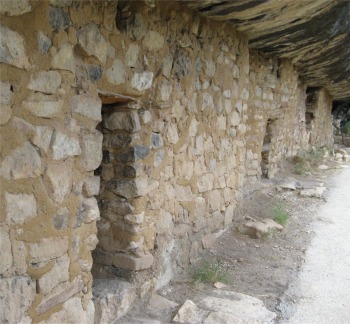 Walnut Canyon Cliff Dwellings |
Today, I was heading east along the I40, my first stop being Walnut Canyon. In densely-wooded plateau country southeast of Flagstaff, the small seasonal stream Walnut Creek had carved a 600' deep canyon as it flowed east, eventually joining the Little Colorado River en route to the Grand Canyon. The exposed Kaibab limestone that formed the upper third of the canyon walls occurred in various layers of slightly differing hardness, some of which had eroded more rapidly forming shallow alcoves. During the 12th to 13th centuries many were used by the local Sinagua Indians who constructed cave-dwellings along the steep well-protected ledges, high above the canyon floor. Today, the appearance of the canyon and ruins was quite reminiscent of the more well known Mesa Verde National Park in Colorado, just on a smaller scale, but the proximity to Flagstaff ensured a steady stream of visitors.
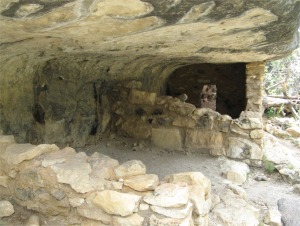 More Walnut Canyon Cliff Dwellings |
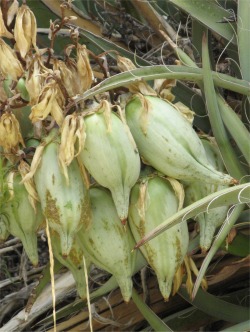 Banana Yucca |
Archaeologists used these differing traits, which occurred in patterns on the landscape, to describe and label cultural traditions such as Ancestral Puebloans (Anasazi) and Sinagua (the two Spanish words, sin and agua, combined to mean without water). Walnut Canyon, with its compact villages of adjoining, rectangular room blocks (called Pueblos by the Spanish), and plain brown pottery, laid within the heart of the Sinagua tradition.
Walking around the 'island', observing the ancient dwellings, a turn introduced a noticeable change in light and temperature. This was the sunnier, warmer, drier side of the 'island', and the change was reflected in the vegetation.
Pinyon pine and juniper replaced the fir, and grew further apart so each could capture enough moisture. Now yucca, prickly pear cactus, and other desert plants covered the trail. The shady forest was now across the canyon, where Douglas fir and ponderosa pine thrived on cool moist slopes.
From Walnut Canyon, I headed further east for another 40 miles to Meteor Crater. The crater was the first to be identified as an impact crater. Between 20,000 to 50,000 years ago, a small asteroid about 80 feet in diameter impacted the Earth and formed the crater, which was the best preserved crater on Earth and measured 1.2 km in diameter. For many years, scientists had denied that there were any impact craters on Earth. The origin of this crater had been a source of controversy for many years. The discovery of fragments of the Canyon Diablo meteorite helped prove that the feature was in fact an impact crater.
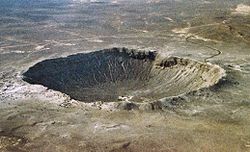 Meteor Crater from the Air |
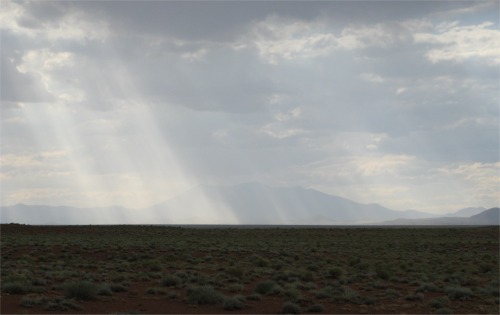 Storm Out Over the Desert |
The crater was a whacking big hole, and the earth around the edges had been physically lifted up 150' by the explosive force of the impact. I had seen the Grand Canyon that was carved out over six million years, and now this huge crater created in a few seconds. Arizona's minimal rainfall in the area, about 6" rain per year, had helped to conserve the crater. Having said that, a huge thunderstorm was visible on the horizon and heading this way. Seeing such storms chase across the flat desert is quite something, rather beautiful in a way. As I left the crater, a hot wind had picked up, and 10 mins. into my journey the storm caught up with me; cats and dogs would have been an understatement.
I headed back into Flagstaff, stopping at Aquaplex just off Route 66 to see if I could buy a shower. The guy at the desk said sure, just go take a shower. I offered money, but as far as he was concerned I could take one for free. There was a very large climbing wall just inside the sports complex, and I was itching to have a go, but I thought, "Do I really want to break a few bones at this stage of my trip?".
Cleaned and refreshed I headed through Flagstaff to the Lowell Observatory. This was founded in 1894 by Percival Lowell, who was researching into the canals on Mars at the time. That turned out to be a fruitless task, but he went on to propose that the universe was expanding, now an accepted fact. One of the historic telescopes was used in the discovery of Pluto. The observatory was still used in active research. The centre had a marvelous exhibition with multimedia shows.
As it was evening, a crescent moon could be observed as well as Venus. Two portable telescopes were set up outside, one to observe the moon, the other Venus. The craters and seas on the moon stood out very well through the telescope trained upon it, the detail was remarkable. Venus was a bright blob in the other telescope. However, I saw something with Venus that I had never seen before and had thus never anticipated. It was partially through a phase. Mercury and Venus were 'inferior' planets, they had closer orbits to the sun, which meant they would also go through phases similar to the moon, and I had just witnessed one of these. It was obvious that there should be phases when I thought about it. There was also a 20" telescope, but the real show stopper was the Clark telescope, a classic 24" refracting telescope built in 1896. This telescope was last used in earnest in the lead up to the Apollo moon shots. The astronauts would need highly detailed maps of the moon's surface, and it was this telescope that was used to create those early maps. This telescope would have been trained on stars later in the evening assuming of course that clouds did not obscure them. However, I didn't want to hang around for another hour, so I left this fascinating centre and headed into town for some food.
|
|
|
I went out onto the balcony to find a table to have my food, and there was the same chap with his wife. They insisted I join them. The chap went on and on, and I could tell he wasn't really listening when I talked to him. I think his wife got embarrassed and left the table to look out at the town from the balcony. I finished my food and just wanted to escape, so I wished him and his long-suffering wife a safe journey and left.
I had enjoyed my two days out and around Flagstaff. The mountain town was an easy going, laid back university town with a lot going on at every corner and square, be it a salsa band with dozens of couples dancing away, to busking groups. There were oodles of good restaurants and bars, something for everyone. It was a good base to explore the surrounding area, and I would recommend it to future travelers.



